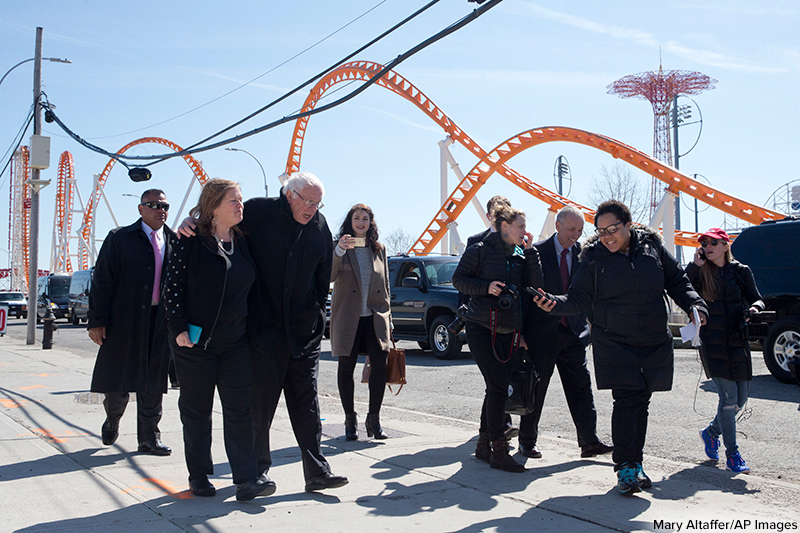- Current Events New Alabama Congressional District Selects Candidates
- Current Events Nebraska Rejects Winner-Take-All Proposal
- Citizenship Voting Under Age 18
- Citizenship Citizenship in Action
- Democratic Party Biden’s and Trump’s Recent Primary Results
- Elections Trump and Biden Win South Carolina and Michigan Primaries

If They Can Make It There . . . New York’s Primary
With just seventeen primaries left in the presidential nomination race, Election Central shines a light on the upcoming New York primary—who is leading, what unique challenges do the candidates face, and what it means to win big in the Big Apple.
Home Team Advantage?
The current front-runners of both parties—Hillary Clinton and Donald Trump—call the Empire State home. Clinton was twice-elected as one of its senators in 2000 and 2006; Trump has been a high-profile New Yorker (with his name prominently hanging on many of its buildings) long before he ever made his first bid for the presidency (a failed run for the nomination in 2000).
Both Trump and Clinton have significant leads in the New York polls so far. Bernie Sanders was born and raised in Brooklyn, but has called Vermont his home since the late 1960s. GOP-hopeful John Kasich could gain some momentum, as he currently has a three-percent lead over Ted Cruz. Both Trump and Kasich plan to attend the New York GOP’s annual fundraiser. The state party’s leadership has not yet officially backed a candidate.
Stricter Laws/Tougher Fight
New York’s primary is considered a “closed” one, which means that only voters officially registered as Democrats and Republicans can vote. (In an “open” primary, voters can cast a vote for in either Party’s primary, although they cannot vote in more than one.) A closed contest affects those voters registered as Independent, who would have had to have changed their party affiliation back in October in order to be eligible. This could negatively impact Bernie Sanders, who is popular among Independents.
Unlike winner-take-all states like Florida and Ohio, New York’s delegates are awarded proportionally. Of the 95 Republican delegates, 81 are Pledged (determined by the majority vote in each congressional district), 11 are At Large (selected by the state Party at the national convention), and three are Unpledged (prominent members of the Republican National Committee—RNC). Of the 291 Democratic delegates up for grabs, 163 are Pledged, 84 are At Large, and 44 are Superdelegates.
What’s Next
New York’s delegate count is the third-highest in the country (behind California and Texas). Nearly half of the remaining primaries are closed contests, which could continue to be a considerable challenge for Bernie Sanders. However, his recent string of wins (8 out of the past 9 contests, including a surprise victory in Michigan) could be the beginning of a significant surge. Clinton holds a significant advantage with 469 committed Superdelegates overall versus Sanders’ 31. Some political strategists say that voter turnout could greatly influence the Democratic race. On the Republican side, Cruz’s unpopularity in New York will likely hurt him, allowing Kaisch to gain some ground. The big question is whether Donald Trump will be able to secure the 1,237 delegates needed to secure the nomination.


